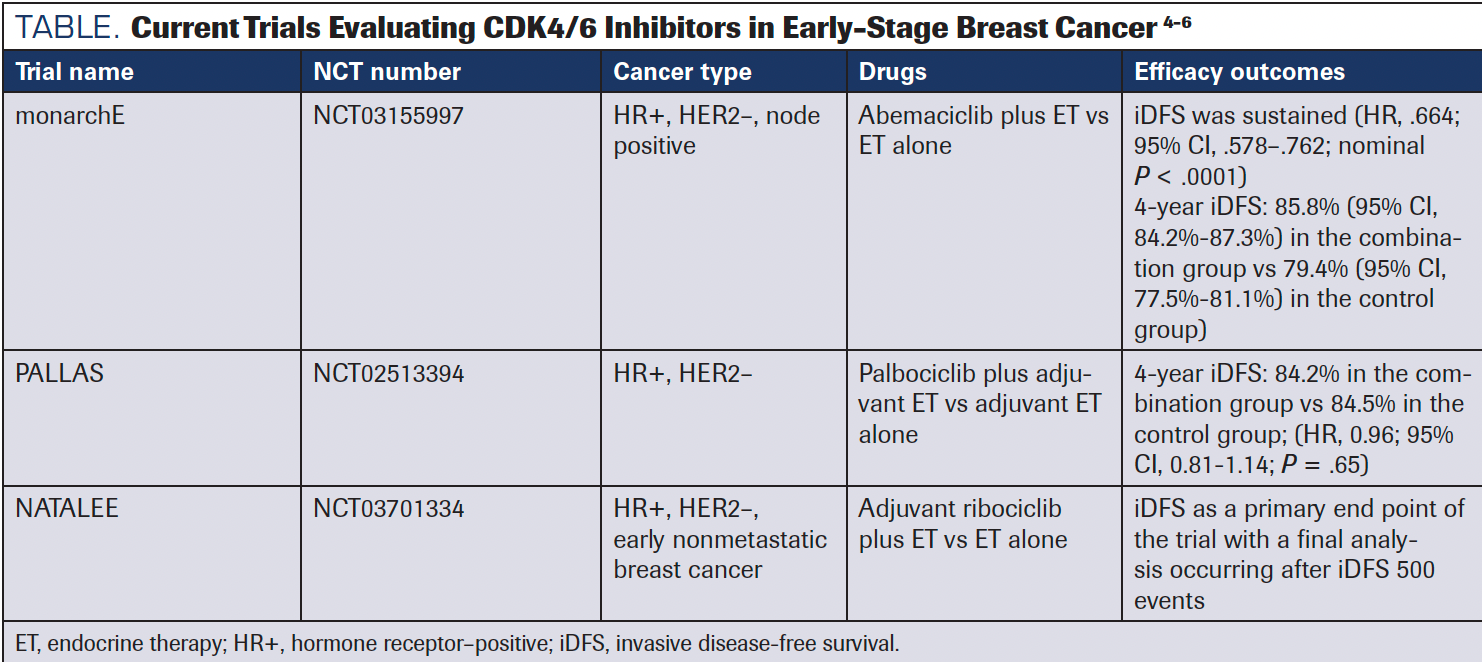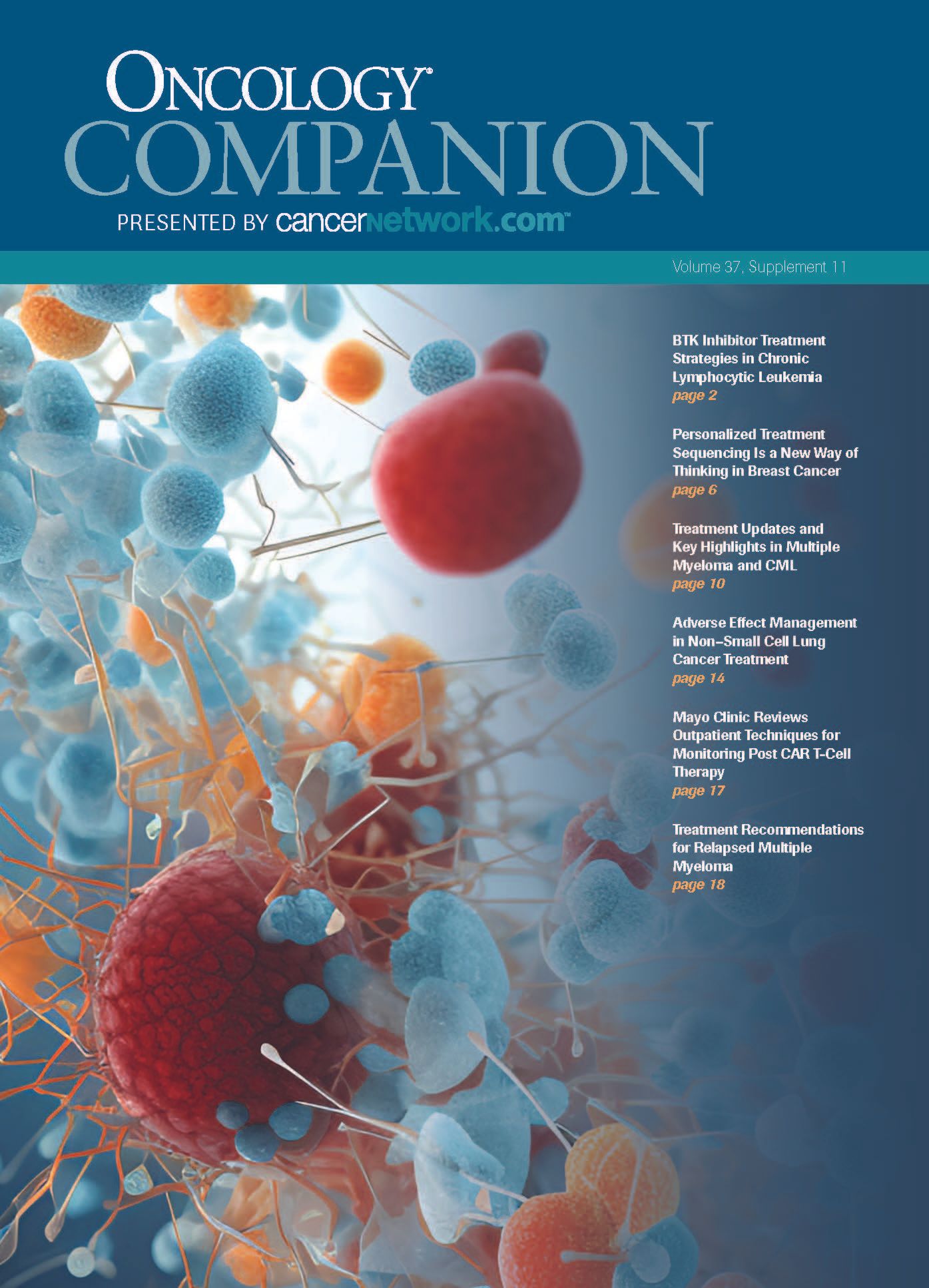Personalized Treatment Sequencing Is a New Way of Thinking in Breast Cancer
Sara M. Tolaney, MD, MPH, gives an extensive overview on the current breast cancer landscape and available treatment options.
Sara M. Tolaney, MD, MPH, chief of the Division of Breast Oncology and associate director of the Susan F. Smith Center for Women’s Cancers, senior physician at Dana-Farber Cancer Institute, and associate professor of medicine at Harvard Medical School, all in Boston, Massachusett

In a rapidly evolving field, new strides and standards of care are being used to manage breast cancer. In a recent OncView® program, Sara M. Tolaney, MD, MPH, gave a comprehensive overview of updates in the treatment of breast cancer.
The discussion centered on biomarker testing in the field, treatment options for patients with early-stage breast cancer and HER2-positive breast cancer, and key trial updates that affect the standard of care. Tolaney is chief of the Division of Breast Oncology and associate director of the Susan F. Smith Center for Women’s Cancers, senior physician at Dana-Farber Cancer Institute, and associate professor of medicine at Harvard Medical School, all in Boston, Massachusetts.
Biomarker Testing Across All Subtypes
Biomarker testing is becoming more common as clinicians have begun treatment based on the individual tumor. If a patient has early-stage breast cancer, biomarker testing outside of determining whether the tumor is estrogen receptor positive, progesterone receptor positive, or HER2 positive is not necessary. However, if a patient has metastatic disease, additional biomarker testing is needed.
“For all breast cancers, it’s important to think about germline testing to understand whether someone has a germline BRCA mutation. Beyond that, it is important to also understand in the metastatic setting whether someone’s cancer is HER2 low, meaning immunohistochemistry [results of] 1+ or 2+ and not amplified. This is a new way of thinking [because] this wasn’t something we were traditionally testing for,” Tolaney explained.
Some treatment options for patients with HER2-positive or triple-negative breast cancer (TNBC) include monotherapy with PARP inhibitors, and if a patient has high-risk germline BRCA mutations, a year of adjuvant olaparib (Lynparza) is considered. Regarding TNBC, it must be determined whether patients have PD-L1 disease with the use of a 22C3 antibody, and they should receive a score if necessary. For patients with metastatic TNBC and PD-L1–positive disease, chemotherapy plus immunotherapy should be considered because it has a known survival benefit.
“The other biomarkers that we do need to better understand include genomic alterations, particularly in those patients with HER2-positive metastatic breast cancer, where we do need to know whether they have a PIK3CA mutation,” she said. Tolaney also noted that if patients have an ESR1 mutation, elacestrant (Orserdu) was recently approved for those with estrogen receptor–positive, HER2-negative advanced or metastatic breast cancer.1
Ki-67 and ctDNA
The conversation then shifted to Ki-67 as an additional proliferative biomarker for use. One example she mentioned was the approval of abemaciclib (Verzenio) and the trend for an increased survival benefit when patients had high Ki-67 vs low Ki-67 scores.2
“The reason Ki-67 can be controversial is that there have been challenges with the reproducibility of this assay. For patients [with a score that falls] into a mediocre Ki-67 range, there has been a challenge with reproducibility. If you have a very high Ki-67 [score], usually if it’s over 30% or if it’s super low, less than 5%, that’s where it’s been reproducible. The challenge is between 5% and 30% where it’s not been very accurate,” Tolaney said.
She also highlighted that an international working group has put together guidelines for assessing Ki-67 score.3 At Dana-Farber, Ki-67 is not standardly reported by their pathology teams because of the accuracy of the assay. She did note that other institutions report this and consider Ki-67 score because it’s prognostic. In Tolaney’s practice, she uses genomic assays to help determine prognosis and decide on the use of chemotherapy because of the “prospective validation.”
Circulating tumor DNA (ctDNA) is also evolving in the breast cancer setting, specifically for those with early disease. For patients who have completed their therapy but are still showing minimal residual disease, this can be an indicator for relapse. Clinicians are now wondering whether they should rely more on ctDNA testing to determine whether relapse may occur and see whether they can intervene during treatment.
One challenge that was highlighted was the reliability of the negative ctDNA assay results. Some results will show no ctDNA present, but a relapse can still occur. Tolaney hopes that more sensitive assays will be developed to make these tests more reliable.
PARP and CDK4/6 Inhibitors in Early-Stage Breast Cancer
Tolaney noted that a lot of headway has been made over the past few years regarding treatment for patients with early-stage breast cancer. Top-line results observed in the most practice-changing trials can be seen in the Table.4-6
Current Trials Evaluating CDK4/6 Inhibitors in Early-Stage Breast Cancer

Evolution of Treatments for HER2-Positive Breast Cancer
For years, clinicians have thought of either HER2-positive disease or TNBC. Now, HER2-low disease is an emerging field, specifically for those who have HER2 expression but do not have full HER2-positive disease. HER2-low tumors have seen a significant benefit from novel therapies, specifically from fam-trastuzumab deruxtecan-nxki (T-DXd; Enhertu).
“The HER2-low paradigm has blown up the subgroups because this has shown us that we can have benefits across both positive and triple-negative disease, with the same response rates seen in both subtypes if you can find a biomarker. If you can find that HER2 receptor on the surface of the cell, then there are tremendous benefits,” Tolaney said.
The most notable trial in this space is the phase 3 DESTINY-Breast04 study (NCT03734029).7 The trial assessed T-DXd in patients with HER2-low metastatic breast cancer who had 2 previous lines of chemotherapy. Of the 557 patients enrolled, 88.7% had hormone receptor–positive disease and 11.3% had hormone receptor–negative disease.
For patients with hormone receptor–positive disease, the median progression-free survival (PFS) was 10.1 months in the T-DXd group vs
5.4 months in the physician’s choice therapy group (HR, 0.51; P < .001). For those receiving T-DXd, the overall survival (OS) was 23.9 months vs 17.5 months in the control group (HR, 0.64; P = .003).
For all patients, the median PFS was 9.9 months vs 5.1 months in the T-DXd and control groups, respectively (HR, 0.50; P < .001). The OS was 23.4 months for the T-DXd arm and 16.8 months in the control arm (HR, 0.64; P = .001).
Adverse effects of grade 3 or above occurred in 52.6% of patients in the T-DXd arm vs 67.4% in the control arm. Additionally, 12% of patients in the T-DXd arm experienced adjudicated, drug-related interstitial lung disease or pneumonitis and 0.8% of patients had grade 5 effects.
Moving forward, Tolaney said she is anticipating the results of the phase 3 DESTINY-Breast06 trial (NCT04494425).7 This study looked at T-DXd vs chemotherapy in patients with HER2-low metastatic breast cancer. The study looked to determine whether patients receiving T-DXd after prior endocrine therapy have a longer time with no cancer growth or live longer compared with the control group. A subgroup of patients with
HER2-ultralow disease was also enrolled in the trial.
Emerging Treatments in the Field
As the conversation shifted, Tolaney began to discuss ongoing or new treatments in the breast cancer space that affect the standard of care. She highlighted that there are many antibody-drug conjugates (ADCs) being developed and some have been previously approved. Current standard ADCs include ado-trastuzumab emtansine (Kadcyla), T-DXd, and sacituzumab govitecan-hziy (Trodelvy).
She also highlighted the use of datopotamab deruxtecan (Dato-DXd): “We’ve seen data in [premanaged] triple-negative disease as well as [premanaged] hormone receptor–positive disease where we’ve seen robust activity. Because of this, there are registration trials ongoing.”
One such trial is the phase 3 TROPION-Breast01 trial (NCT05104866).8 This trial will look at Dato-DXd plus investigator choice chemotherapy in patients with inoperable or metastatic hormone receptor–positive, HER2-negative breast cancer who have been treated with 1 or 2 prior lines of systemic chemotherapy. The trial has completed accrual, and Tolaney predicts data may be presented at the 2023 San Antonio Breast Cancer Symposium in Texas.
Another treatment she thinks has potential in the field is capivasertib plus fulvestrant (Faslodex). This is currently under FDA review and has a Prescription Drug User Fee Act date of the fourth quarter 2023. The combination was analyzed in the phase 3 CAPItello-291 trial (NCT04305496) for patients with hormone receptor–positive, HER2-negative advanced breast cancer who experienced relapse or disease progression during or after treatment with an aromatase inhibitor, with or without previous CDK4/6 therapy.9 Clinicians are waiting to see whether the approval will happen and whether this indication will include patients in the biomarker-driven population.
Final Thoughts
Moving forward, Tolaney noted that the field of breast cancer is evolving very quickly. As new data are constantly being released, it can be hard to keep up with the available treatment options. Because community oncologists tend to manage multiple types of cancer, Tolaney emphasized that it can be difficult to stay up-to-date on this information. “One thing that’s important is to understand how to use biomarkers to help select agents for patients, because I think we are moving toward more personalized care for patients with breast cancer,” Tolaney said.
After you have these data from the biomarker testing, the question becomes: How do you sequence them one after another? Tolaney suggests understanding what targets are present in each patient and moving forward to tailor therapy that way because it will help to improve
outcomes and lower adverse effects.
References
- FDA approves elacestrant for ER-positive, HER2-negative, ESR1-mutated advanced or metastatic breast cancer. FDA. January 27, 2023. Accessed October 11, 2023. https://bit.ly/3ZOzD3J
- FDA approves abemaciclib with endocrine therapy for early breast cancer. FDA. October 13, 2021. Accessed October 11, 2023. https://bit.ly/48RKYnN
- Nielsen TO, Leung SCY, Rimm DL, et al. Assessment of Ki67 in breast cancer: updated recommendations from the International Ki67 in Breast Cancer Working Group. J Natl Cancer Inst. 2021;113(7):808-819. doi:10.1093/jnci/djaa201
- Johnston SRD, Toi M, O’Shaughnessy J, et al; monarchE Committee Members. Abemaciclib plus endocrine therapy for hormone receptor-positive, HER2-negative, node-positive, high-risk early breast cancer (monarchE): results from a preplanned interim analysis of a randomised, open-label, phase 3 trial. Lancet Oncol. 2023;24(1):77-90. doi:10.1016/S1470-2045(22)00694-5
- Gnant M, Dueck AC, Frantal S, et al; PALLAS Groups and Investigators. Adjuvant palbociclib for early breast cancer: the PALLAS trial results (ABCSG-42/AFT-05/BIG-14-03). J Clin Oncol. 2022;40(3):282-293. doi:10.1200/JCO.21.02554
- Slamon DJ, Fasching PA, Hurvitz S, et al. Rationale and trial design of NATALEE: a phase III trial of adjuvant ribociclib + endocrine therapy versus endocrine therapy alone in patients with HR+/HER2- early breast cancer. Ther Adv Med Oncol. 2023;15:17588359231178125. Published correction appears in Ther Adv Med Oncol. 2023;15:17588359231201818.
- Modi S, Jacot W, Yamashita T, et al; DESTINY-Breast04 Trial Investigators. Trastuzumab deruxtecan in previously treated HER2-low advanced breast cancer. N Engl J Med. 2022;387(1):9-20. doi:10.1056/NEJMoa2203690
- Bardia A, Jhaveri K, Kalinsky K, et al. TROPION-Breast01: datopotamab deruxtecan vs chemotherapy in pre-treated inoperable or metastatic HR+/HER2- breast cancer. Future Oncol. 2023;10.2217/fon-2023-0188. doi:10.2217/fon-2023-0188
- Turner NC, Oliveira M, Howell SJ, et al. Capivasertib in hormone receptor-positive advanced breast cancer. N Engl J Med. 2023;388(22):2058-2070. doi:10.1056/NEJMoa2214131

Newsletter
Stay up to date on recent advances in the multidisciplinary approach to cancer.